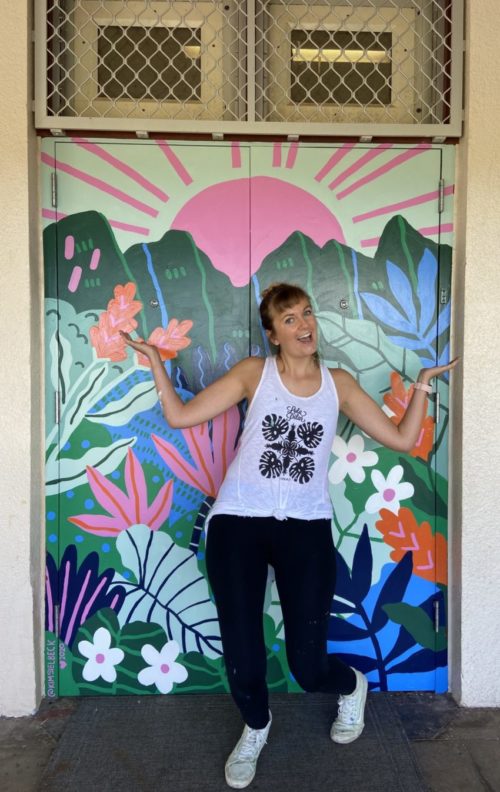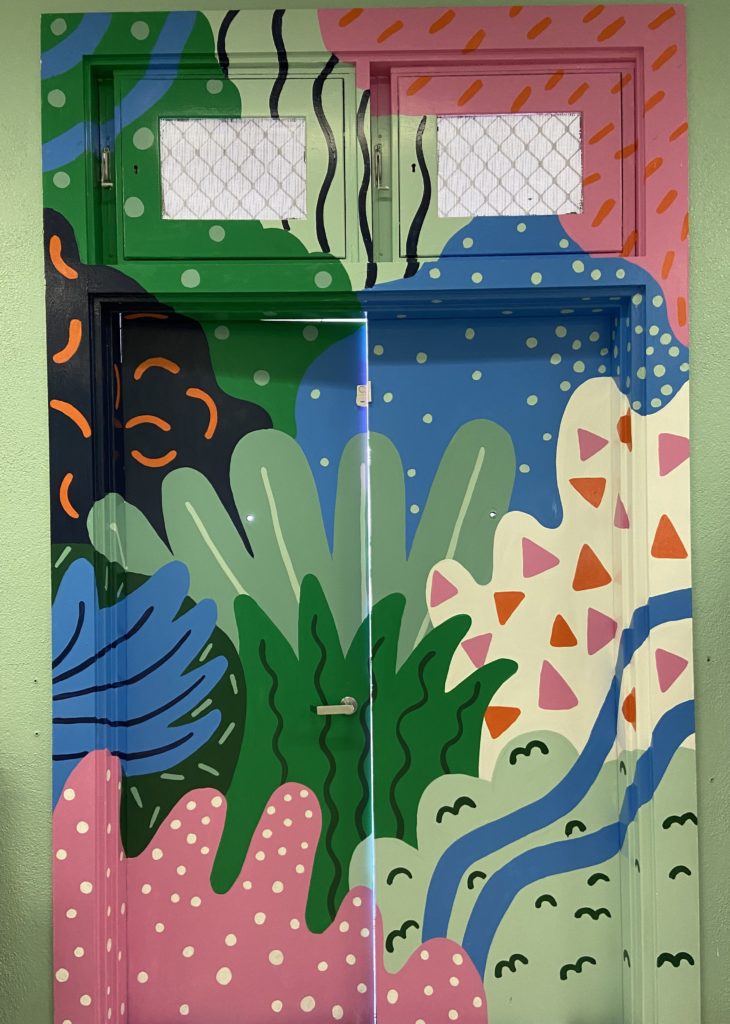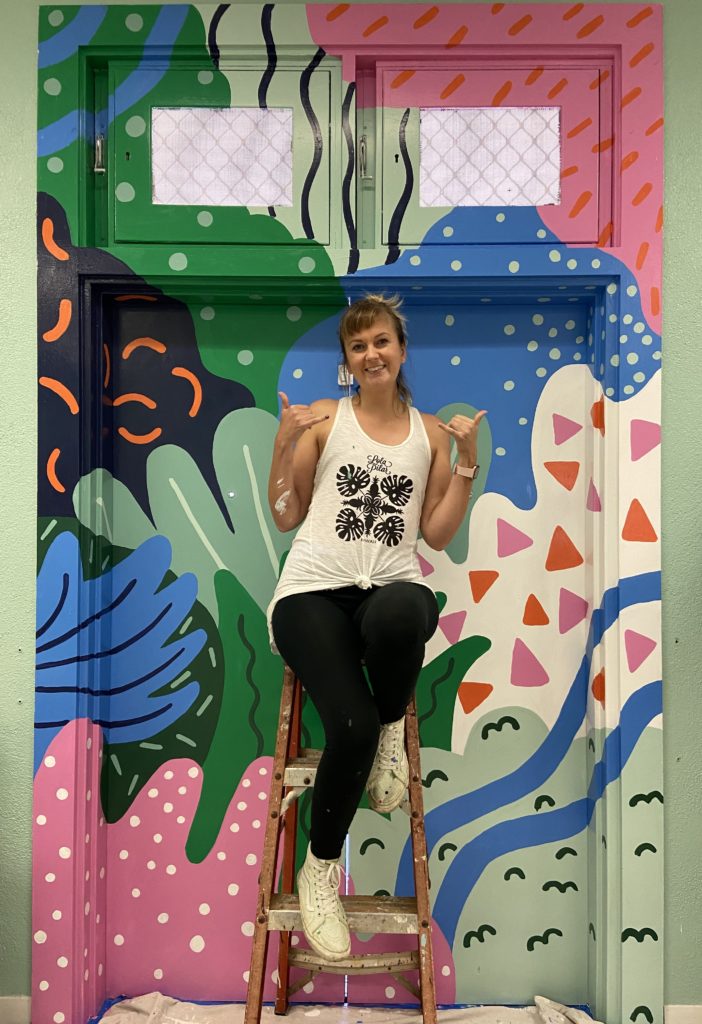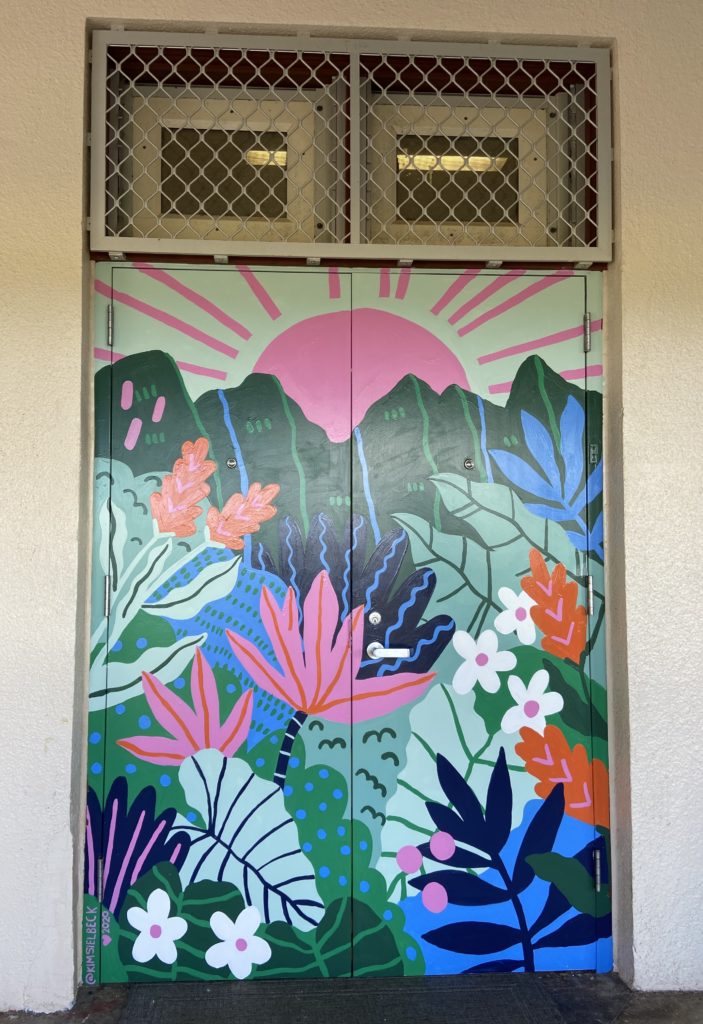
A vibrant mural now welcomes visitors to Hale Kipa’s Hale Lanipōlua Assessment center, a safe haven for youth who are victims/survivors of commercial sexual exploitation and trafficking.
Kim Sielbeck, a Honolulu-based illustrator, designed and painted the mural in her trademark vivid shades and bold style. The 7 by 8-foot painting, visible as soon as one ascends the front steps, is an inviting frenzy of lush greenery, plumerias and red ginger flowers in hues of hot pink, green, turquoise, and royal blue with splashes of orange and red. Sielbeck also painted a 7 by 12-foot mural on the interior side of the doors in geometric shapes and similar distinctive colors. It took her two days to paint the two murals.
Hale Kipa’s Hale Lanipōlua is a voluntary program for youth between the ages of 12 and 17 who are self-referred or referred by Child Protective Services, Family Court, parents, police, or youth agencies. The 24-hour nurturing safe haven provides family support services and referral to community services, individual and group therapy, educational services, skill building, recreation, nutritious meals and everything else required to meet all residents’ basic needs.
Sielbeck moved to Hawaii from New York City in 2017. Her work can be found in magazines, murals, packaging, and clothing. It has appeared locally in places such as Ward Center, Old Blaisdell Hotel, and the Santo Loco Surf Shop in Wahiawa and in Honolulu Magazine.
The mural for Hale Lanipōlua is part of her personal goal to give back to the Oahu community and this island that she said has provided her with much enrichment and inspiration.
“Claire and Victoria reached out to me about collaborating with Hale Lanipōlua, and hearing more about their mission and the girls they work with, I knew it was meant to be,” Sielbeck said.
Sielbeck chose the subject matter with the intention of creating a welcoming, hopeful, optimistic entrance to set the tone for the center as well as to integrate and pay homage to the natural beauty of the surrounding area. “As soon as you walk through those doors, you know you’re safe,” Sielbeck said.








